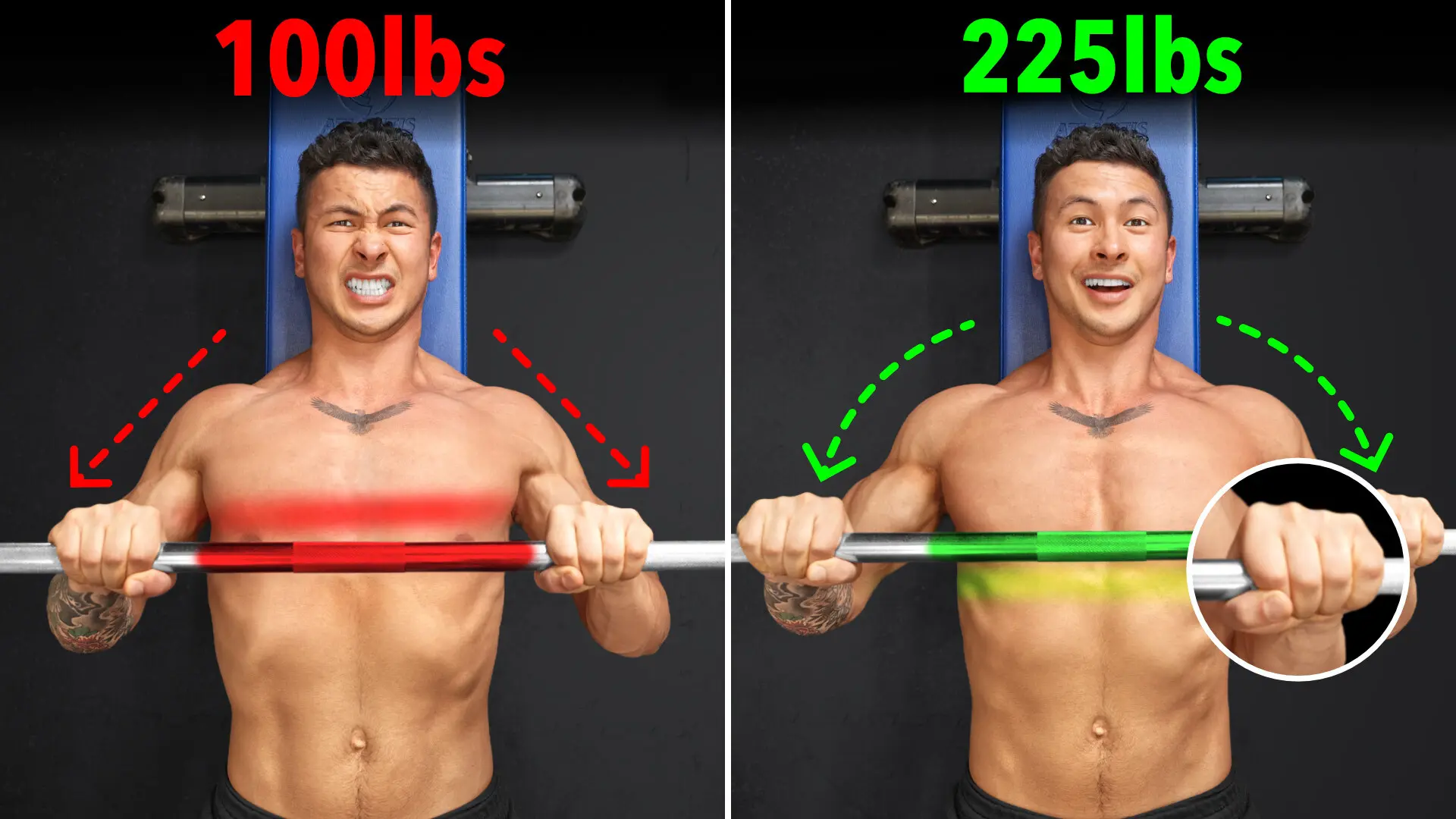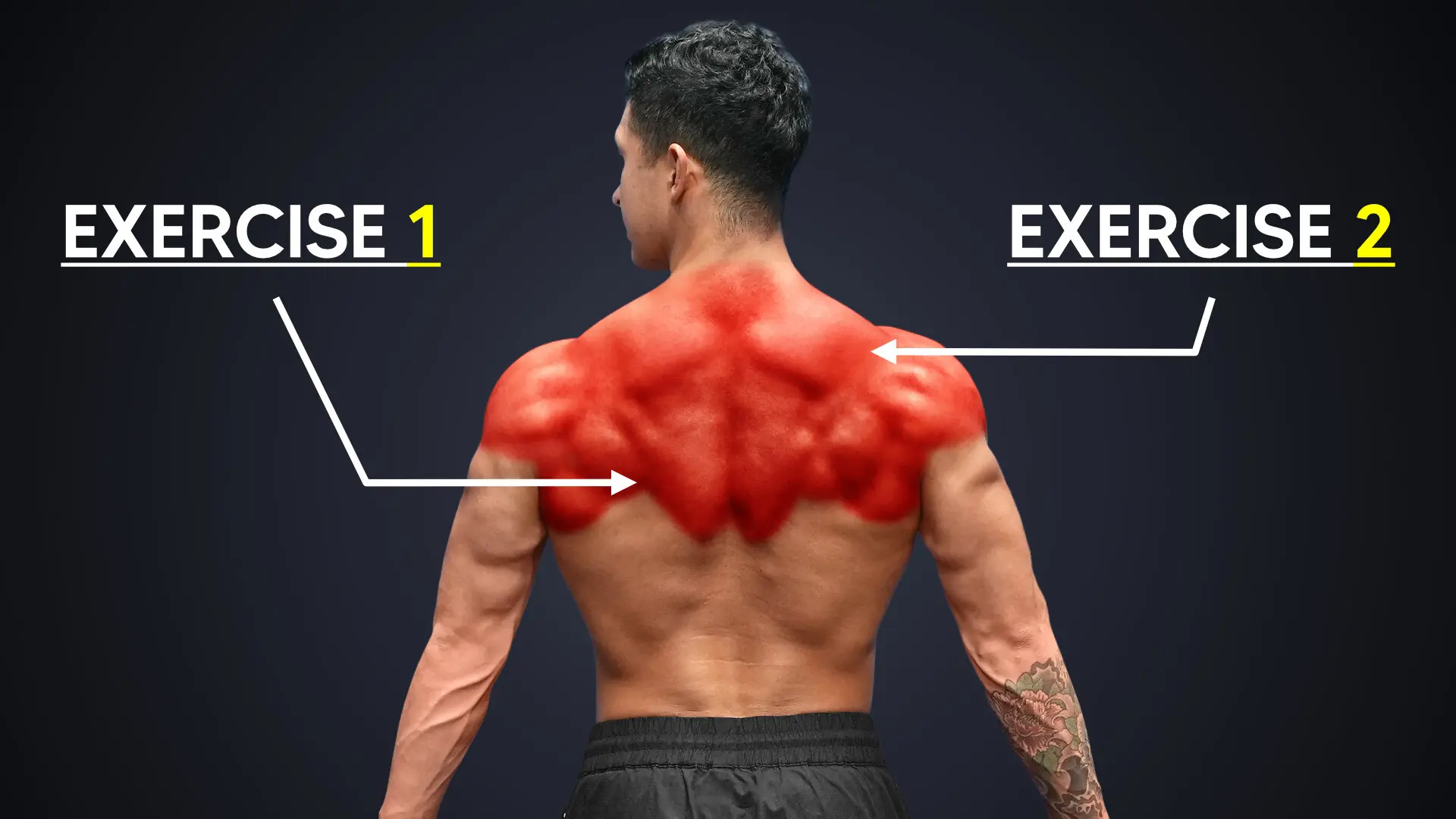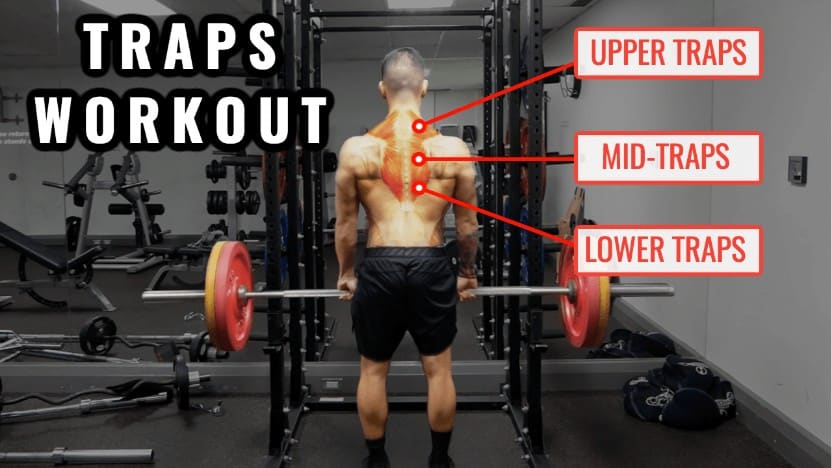
The Best Science-Based Trap Exercises for Growth (10 Studies)
If you want to learn what science has to say about what the best trap workouts and exercises are for growth... Then you need to read this article.
Of all the major muscle groups, the traps are one of the most important muscles for creating a powerful looking upper body and completing a well-developed frame.
For example, take a look at these two pictures of me:
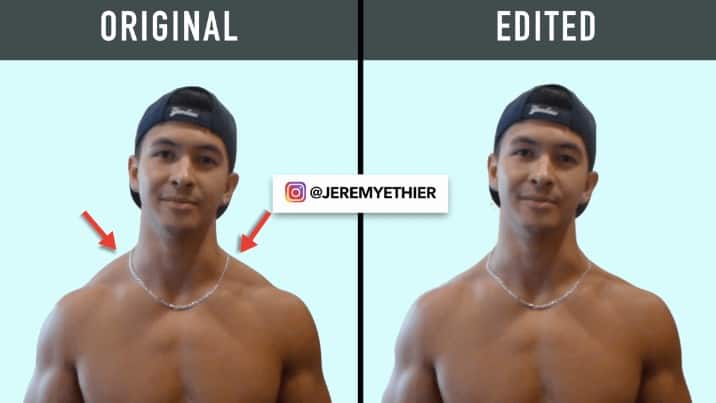
The original on the left and the edited version on the right with a considerable downsizing of my traps. You can see the extent to which the well-developed traps on the left contribute to the overall aesthetic of my upper body by connecting the neck to the shoulders (Click Here For A Shoulder Workout). Whereas on the right, this component is absent and takes away from the muscularity of my physique.
But not only that, but adequate development of all three portions of the trap muscle ALSO:
- adds considerable size and definition to the back musculature between the lats
- plays an important role in injury prevention and improving posture.
And despite the fact that several common pulling exercises will involve the traps, they can be further emphasized through various exercises.
But in order to learn how to best workout the traps, we need to first understand their anatomy.
Before that: if you're looking for a training program that'll help you train every single one of your muscle groups for a balanced-looking physique, I've got just the thing for you. Every BWS program is designed to be an all-in-one, science-based process that’ll get you looking better - FAST. And best of all? It's all rooted in science. For more information:
Click the button below to take my analysis quiz to discover the best program for you:
↓
Anatomy of the Trapezius Muscle
Anatomically, the trapezius muscle is divided into three main regions, commonly referred to as:
- the upper
- the mid-traps
- the lower traps
All three regions can be seen in the image below:
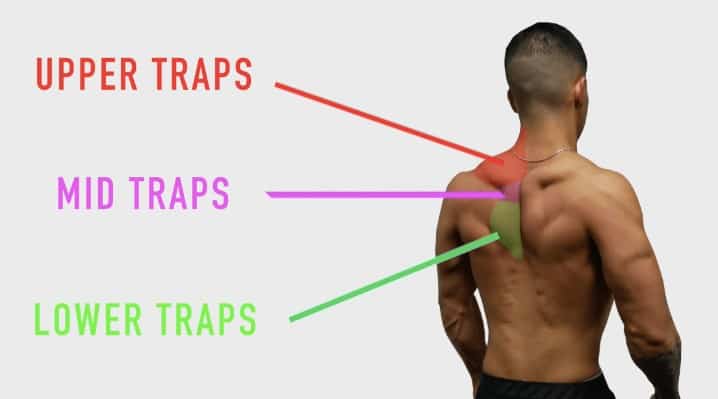
The upper traps are the region most people focus on, likely because they are clearly visible from the front view. The middle and lower traps on the other hand are often underdeveloped in most people partly since:
- They’re not visible in the mirror (who likes to train muscles you can't see?!)
- Other more powerful muscle groups like the upper traps and lats tend to overpower them
This is detrimental since they not only help add extra definition to your back... But they also play a very important role in scapular stability which is especially useful for preventing shoulder impingement.
Therefore, ensuring that you’re actually emphasizing each portion of the traps based on their function and anatomy is vital. And in this article, I’ll show you an evidence-based trap workout that does just that.
Exercise #1: Above-The-Knee Rackpulls
(Emphasis: Upper Traps)
When it comes to trap development, rack pulls above-the-knee have become increasingly popular as of late, and for good reason.
Although this exercise will target the majority of the back musculature, most of the emphasis is placed on the upper traps:
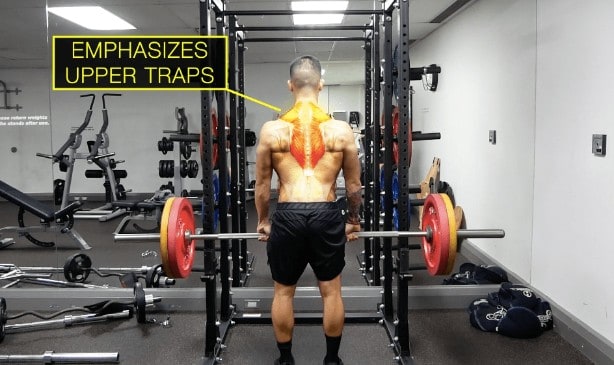
And the reason they’re so effective at building the upper traps can be explained through the findings of the following two EMG analysis studies.
Both studies found that during the conventional deadlift, upper trap muscle activity is the lowest during lift-off to mid-lift when the bar is around knee height:
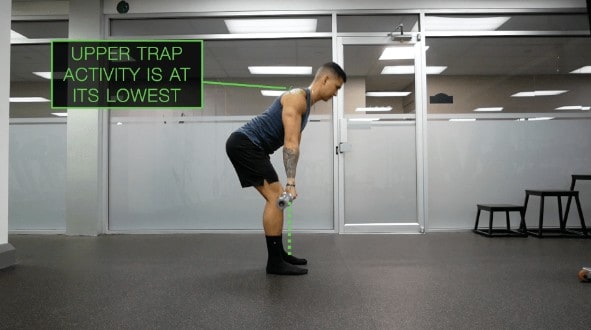
Whereas from past the knee to lockout, the involvement of the upper traps increases and reaches their maximum muscle activity:
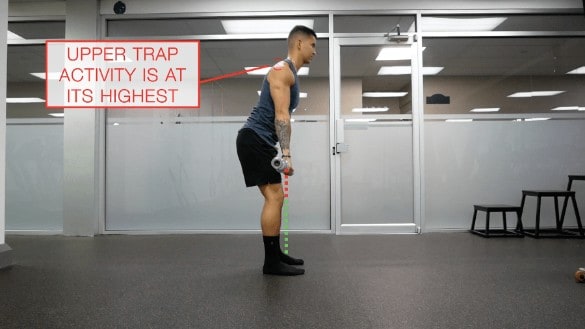
Therefore, by limiting the movement such that you’re only performing the upper portion of a deadlift, you’re able to specifically emphasize and overload the upper traps with heavy weight without taxing your lower body musculature.
Simply making above-the-knee rack pulls a very effective option for targeting the upper traps without impairing your recovery.
It should also be noted that since as shown in this 2011 study from the University of Kentucky, upper trap muscle activity during the deadlift increases with heavier loads, you should therefore strive to use heavy weight when performing this movement in order to maximize upper trap involvement. But as always, to avoid injury do so within your relative capabilities.
Exercise #2: Barbell Shrugs
(Emphasis: Upper Traps)
The barbell shrug is another excellent trap exercise to include in your arsenal:
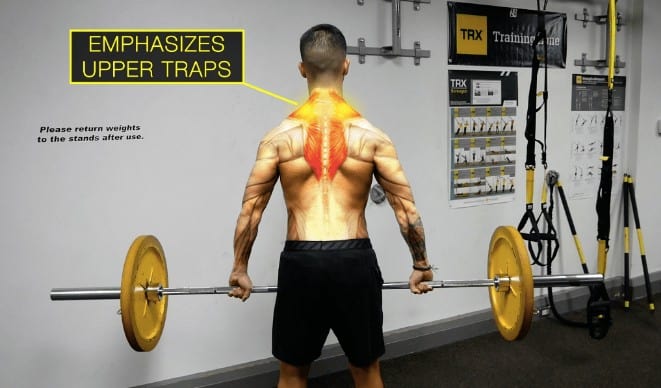
They will again mainly emphasize the upper traps, and seem to be one the best options when it comes to activating and developing this muscle.
One 2008 paper from Andersen and colleagues found that the shrug elicited the highest upper trap activity when compared to 4 other common upper trap exercises. The results of the analysis can be seen below:

In agreement with this, an extensive 2010 EMG analysis by researcher Bret Contreras analyzed upper trap activity with 25 different shoulder and trap exercises. The barbell shrug was once again found to elicit the highest upper trap activity.
Performing The Shrug Optimally:
However, despite already eliciting high upper trap activity, it’s vital that you perform the barbell shrug optimally in order to maximize its effectiveness.
And as shown in this paper from the Journal of Clinical Biomechanics that analyzed the shrug, there’s two things you can do:
1. Widen Your Grip Width
The first thing you can do is widen your grip width. This is because performing the shrug with your hands shoulder-width apart increases the involvement of the levator scapulae muscle in your neck and lessens that of the upper traps due to their respective muscle fiber orientation:
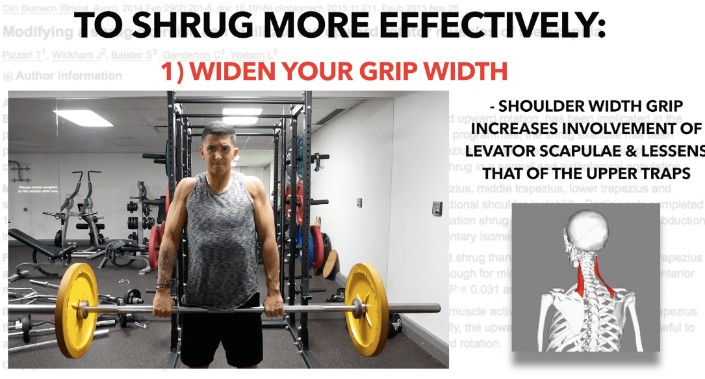
So instead, by widening your grip when you perform the shrug, you can see how the line of pull is now more inline with the way the upper trap fibers run:
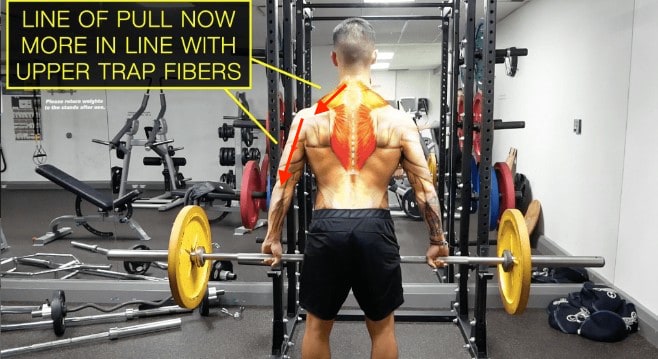
This helps increase their involvement and lessens that of the levator scapulae muscle.
2. Shrug "Up and Back"
The second thing you can do, is rather than simply shrugging the weight completely straight up and down, you want to instead think about squeezing your shoulder-blades together as you shrug up (note: I'm not talking about "rolling the shoulders").
Since the upper traps not only function to elevate the scapula, but also assists in retracting it, it means that this small tweak will lead to a better contraction.
Of course, each exercise's optimal lifting cue differs. If you wish to get more guidance on this, don't worry. Our 3-on-1 coaching program can help. My team of experts here at BWS – and I – will always take the time to explain the dos and do not's of each exercise's execution in your personalized training program. Find out more about how we can help you achieve your dream physique below:
Click the button below to find out more about the 3-on-1 coaching program:
↓
Exercise 3: Prone Reverse Fly with External Rotation (Emphasis: Mid-Traps)
This next exercise is something I’d highly suggest you add into your training arsenal.
They’re called prone reverse flies and will mainly emphasize the mid traps:
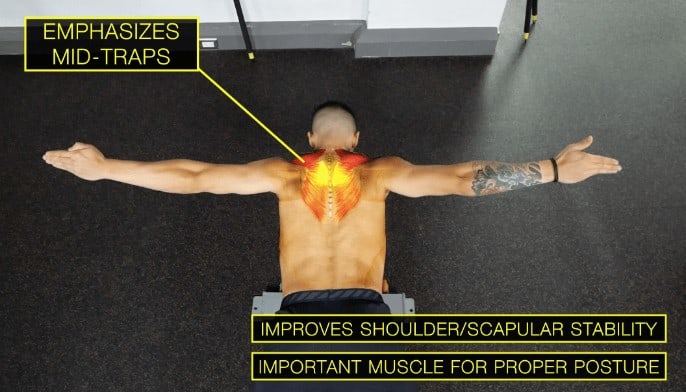
Multiple studies have found that the prone reverse fly with external rotation, such that the thumbs are pointing up, elicits maximal activity of the mid traps.
This is likely because of the way the mid-trap fibers run.
Since as you can see below, the line of pull of the arms is most in line with the mid-trap fibers which run pretty much horizontally:
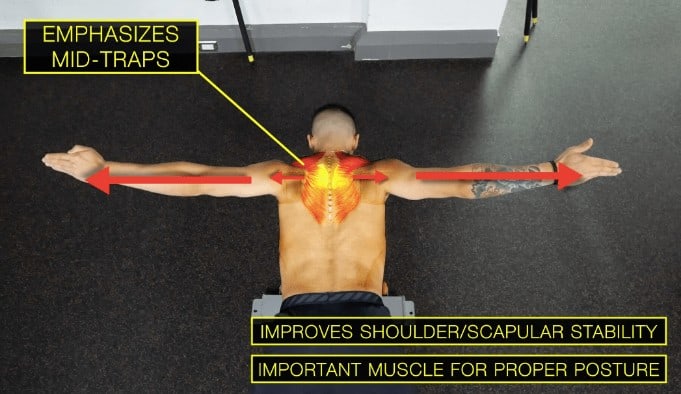
Now as for how to perform them, simply lay on a flat or incline bench or even on the floor and lift your arms straight out to your side with your thumbs pointing up.
The goal is to feel a strong contraction in the middle of your back, so avoid shrugging your shoulders up as you perform them in order to minimize upper trap involvement. I’d highly suggest starting out without any weight and then gradually adding weight overtime as needed.
Exercise 4: Prone Y’s
(Emphasis: Lower Traps)
This exercise will mainly emphasize the lower traps - which like the mid not only contribute to aesthetics, but also play a vital role in strength and stability of the shoulder and improving posture.
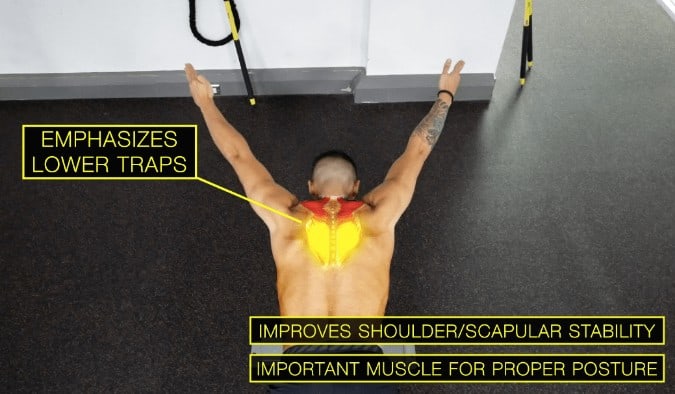
In support of this exercise, one 2003 EMG study by Ekstrom and colleagues found that:
Prone Y’s elicited the highest lower trap activation when compared to 9 other common lower trap exercises.
Which again is likely because of the way the lower trap fibers run. Since as you can see below, the line of pull of the arms is most in line with the lower trap fibers which run downwards at a slight angle:
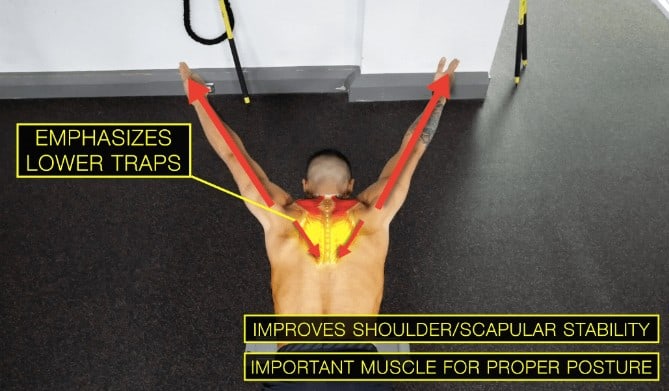
And the way you perform this exercise is identical to the previous exercise just with your arms positioned such that they make a Y shape. I’d suggest starting out with no weight initially, and then progress it by either adding weight overtime.
Another good option to overload this exercise is by applying the same concept with a cable machine for the added resistance.
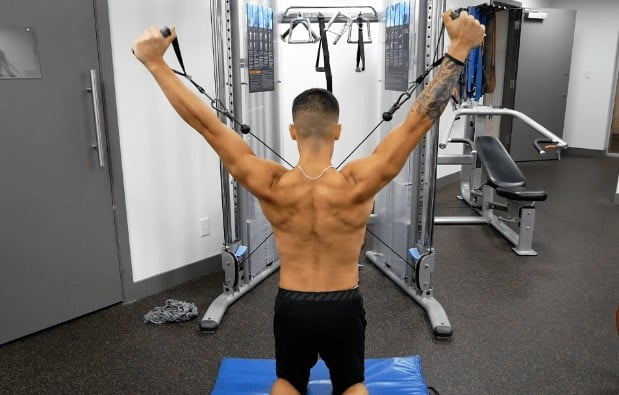
Where you kneel down and grab the opposite cables with each hand and raise your arms overhead such that they make a Y-shape.
Sample Workout
So to wrap this all up, here’s a sample workout you can do using the exercises previously discussed:
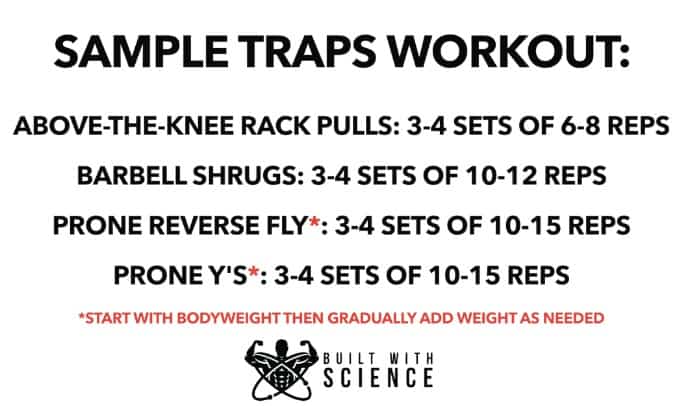
Keep in mind that this just a recommendation, and the optimal number of sets and reps will vary individually, but I just wanted to give you some sense of direction to take.
And as for how to best implement this, you have a few options:
- If your traps are really lagging and it fits well with your workout split you can run this just as a workout on its own
- Add a few of these exercises when you train your back or shoulders to help give your traps a little more emphasis
- Run a specialization phase for a few months with these exercises to hit the traps with greater volume
Just note that many back exercises, especially the deadlift, already target the traps so just ensure that you’re not overdoing it.
And keep in mind that you don’t just want well-developed traps, you want your back, chest, arms, and shoulders and lower body to be just as developed....
...So if you’re looking for a truly evidence-based program that shows you exactly how to do this and how to use science to help you reach your goals as efficiently as possible, then simply head on over here where you’ll be able to choose the program that best suits you:
Click the button below to take my analysis quiz to discover the best program for you:
↓
Anyways, that's it for this article! Hope you enjoyed it and found it useful! Don’t forget to give me a follow and connect with me on Instagram, Facebook, and Youtube as well. Cheers!


